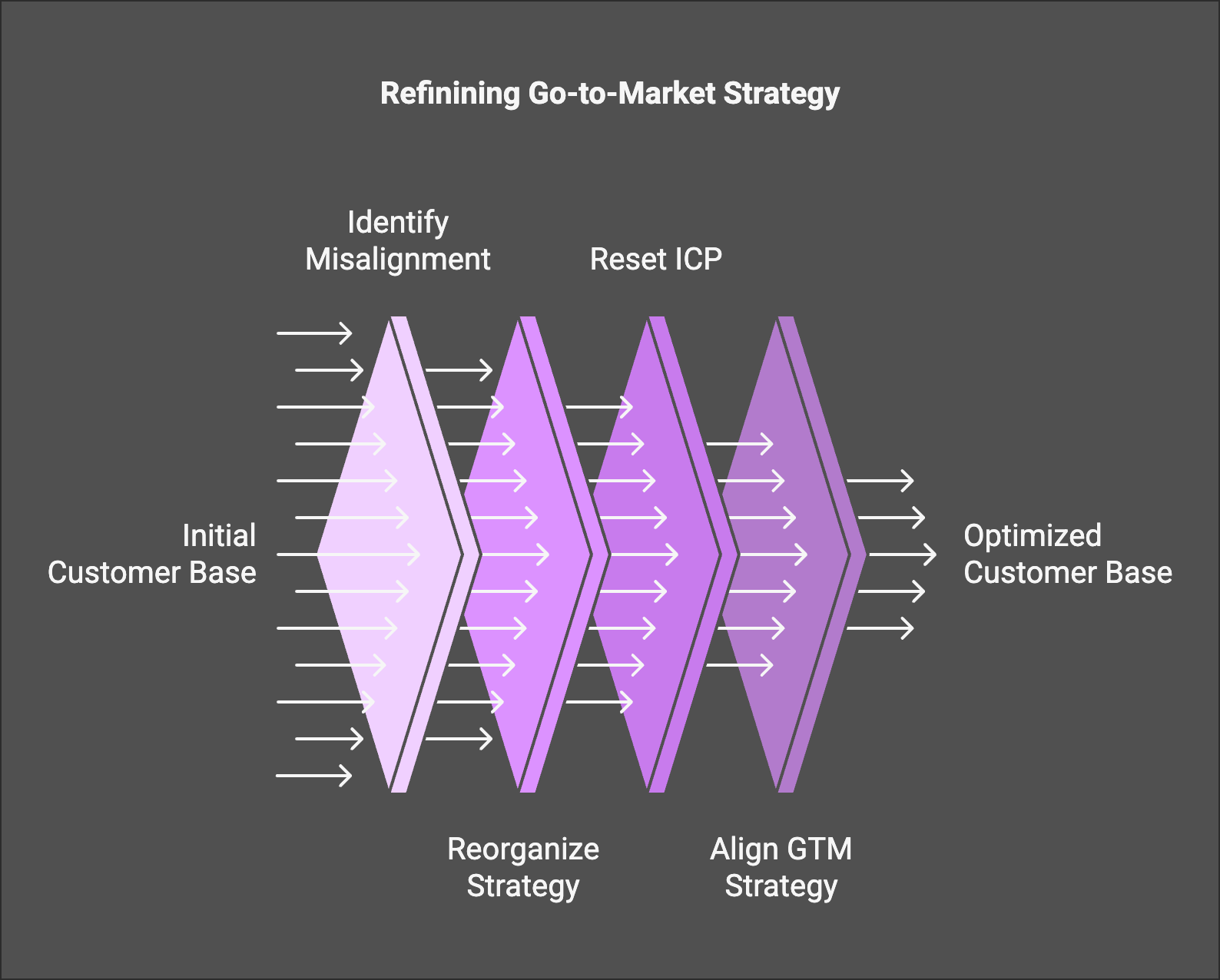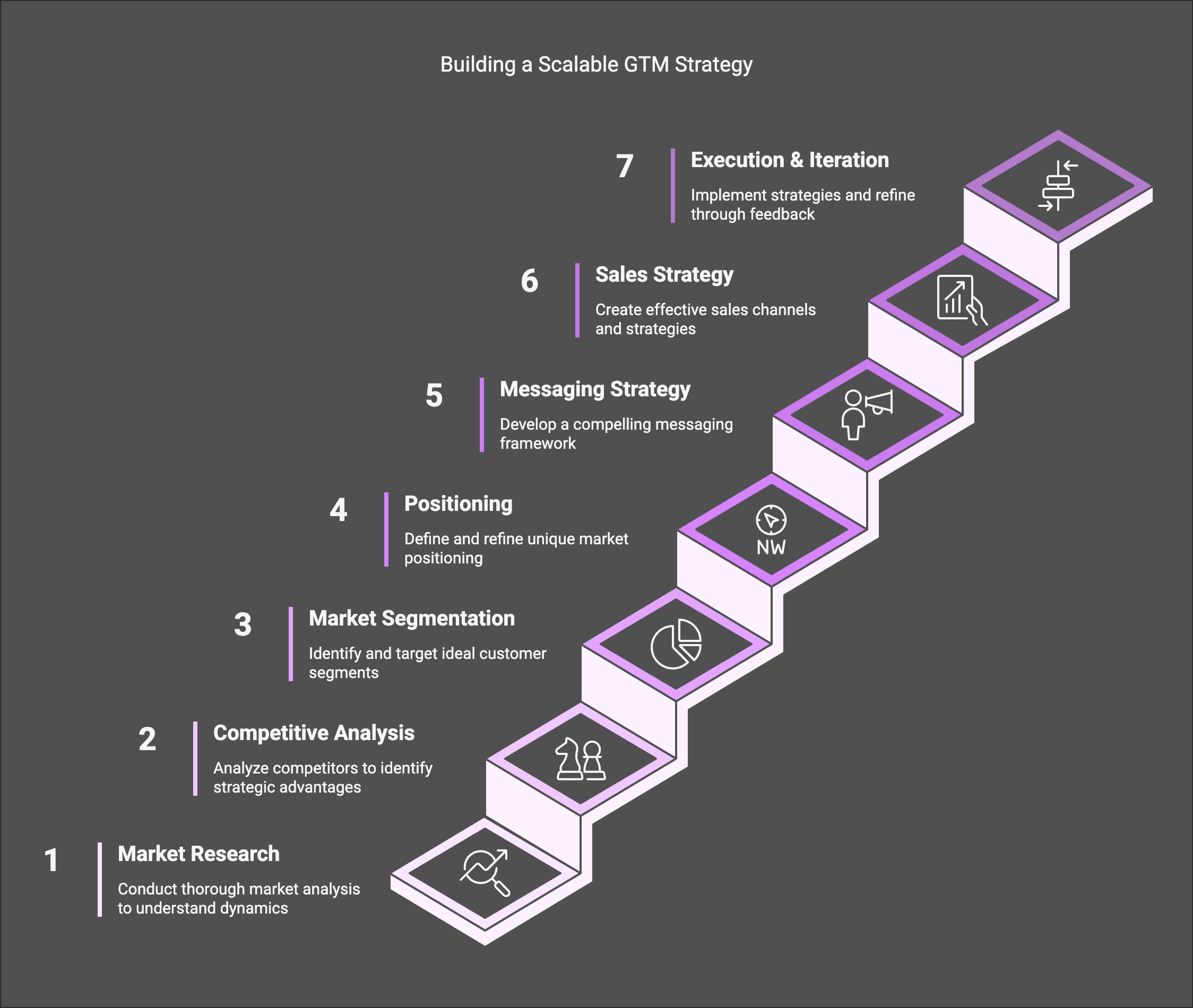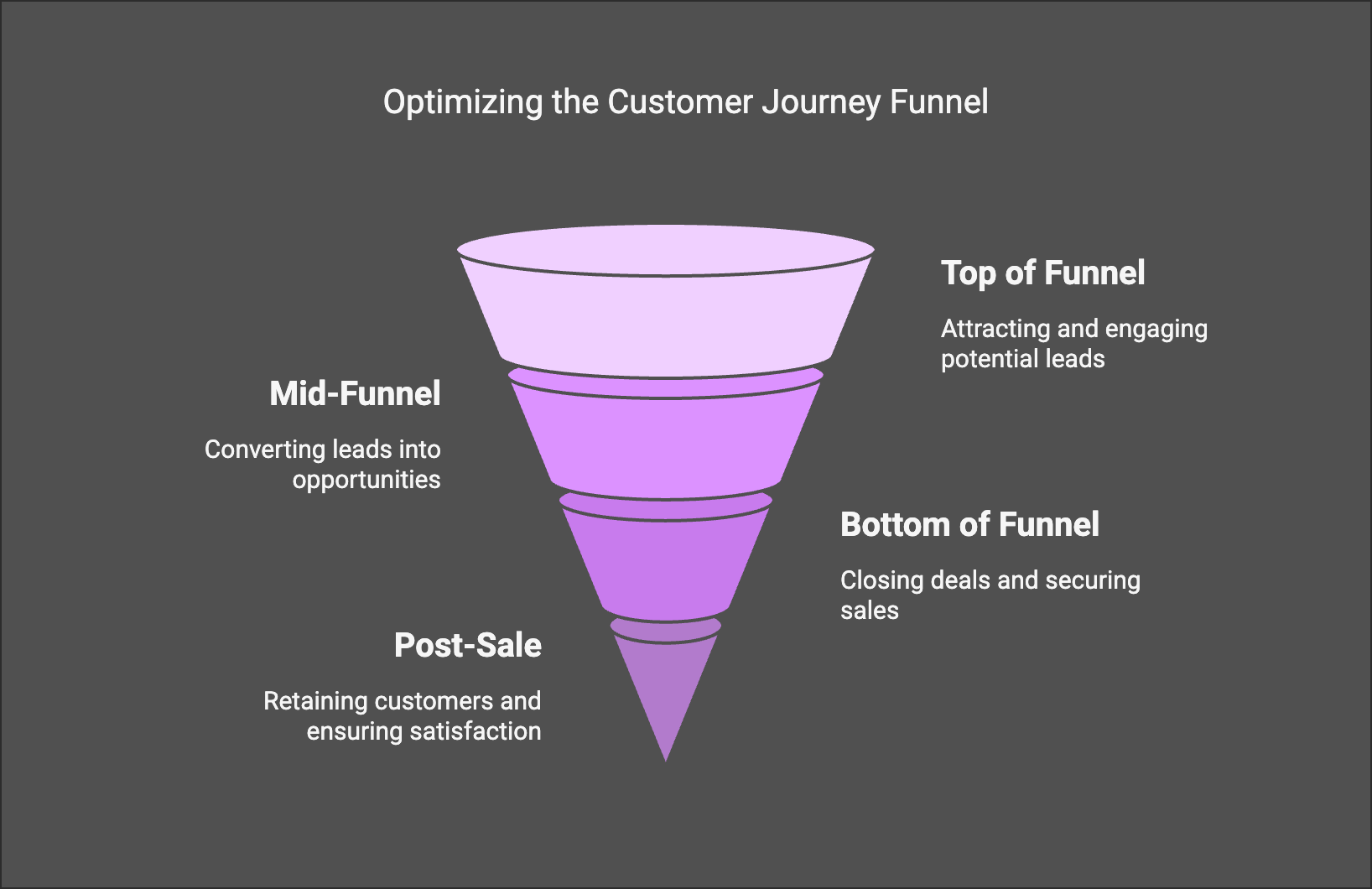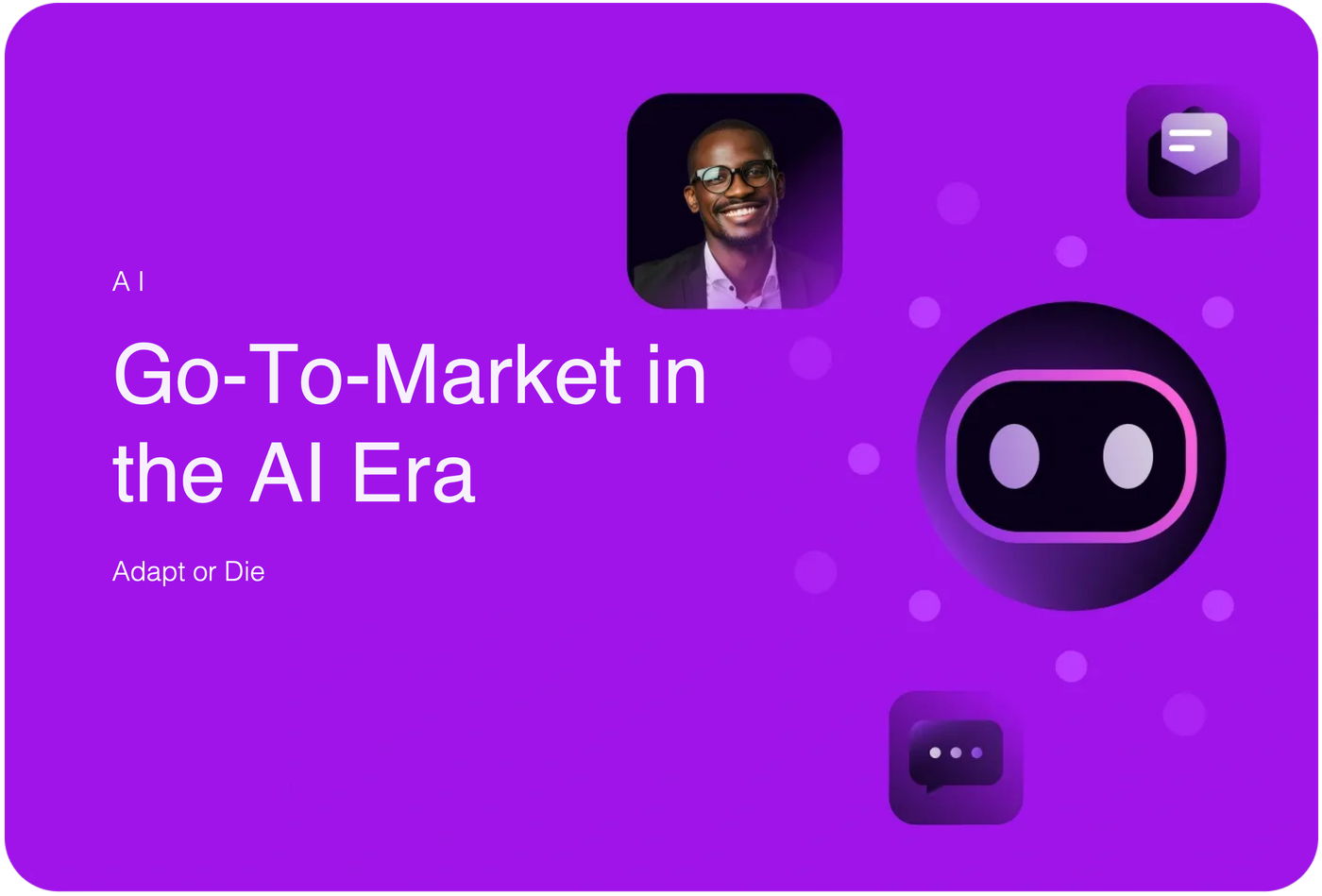Go-to-market strategy has always been one of those areas where you feel the pain not when it’s missing—but when it’s wrong. I’ve lived through that. At CIENCE, we scaled fast, grew to 2,000 people across the globe, and hit #199 on the Inc. 500 list. But at one point, we realized something critical: we had the wrong customers. Not all of them, but too many. That misalignment—signing deals we shouldn’t have—created complexity, cost us margin, and nearly broke us.
It was a wake-up call. We reorganized, reset our ICP, and changed how we approached GTM entirely.
That’s what this piece is about: building a go-to-market strategy that’s aligned from the start, not one you have to unwind later. And doing it in a way that fits this new era we’re in—the AI era, where the old rules (and old stacks) don’t cut it anymore.

We call this GTM for the AI Era. Not because AI replaces sales, marketing, or RevOps. It does tedious elements of it, but you still need the spear that drives things forward. It augments it.
SDRs bring judgment, empathy, and creativity to outbound—but AI can handle the repetitive, time-sensitive tasks at scale. AEs are responsible for trust, negotiation, and deal strategy—tasks that do require a human. RevOps can focus less on duct-taping tools together and more on building repeatable systems and insights. For many companies some of these roles are going to be interchangeable, you will have more generalists that are able to move the needle across a well orchestrated platform. this is where everyone becomes a expert marketer!
This isn’t theory. At graph8, we built the company from the ground up as a compound startup—a full-stack GTM platform designed to empower everybody in the company to go to market like a pro. Not just the RevOps guy. Not just a giant SDR team. Everyone. Because what we saw over and over is that traditional GTM efforts involved a dozen people, a tangle of disconnected tools, and a constant uphill battle just to coordinate outreach.
So we went the other way. We built one integrated system where data, outreach, meetings, voice, and AI all work together. And most importantly, we designed it to enhance the human team, not replace them.
This blueprint outlines how B2B companies—especially mid-market or growth-stage ones—can rethink GTM from the ground up. Whether you're launching a new product, entering a new segment, or realizing your current GTM just isn’t scaling well, these are the components that matter.
We’ll walk through each one—from market research and competitive analysis to segmentation, positioning, and beyond—explaining why each matters and how to execute them step by step. Throughout, we’ll blend proven strategic frameworks with pragmatic guidance, and show how AI, automation, and integrated GTM tools (like graph8) can operationalize these components at scale—while keeping humans at the heart of high-leverage work.

Market Research & Market Modeling: Foundation of GTM Planning
Every winning GTM strategy starts with deep market research. Market research means systematically gathering and analyzing information about your target customers, their needs and behaviors, and the overall market landscape. It blends customer insights with broader economic and industry trends. Skipping this step is perilous—without research, you risk building a product or campaign that misses the mark.
Why it matters: Market research helps you validate demand, refine your idea, and de-risk your business model before heavy investment. It allows you to confirm that there is a real need for your solution and understand the key drivers behind that need. It also uncovers market size and growth potential, so you can model your opportunity and set realistic goals.
Key Aspects of Market Research
- Total Addressable Market (TAM): Estimate the total market demand for your product—if everyone who could use it actually bought it. At Graph8, we layer in our own data signals to size TAM not just in theory, but based on actual in-market behavior.
- Serviceable & Target Market (SAM and SOM): Narrow TAM to your SAM (who you can realistically reach) and SOM (who you expect to capture). For example, our SOM at launch was U.S.-based growth-stage B2B SaaS companies with under 100 sales reps—because those teams feel the GTM pain most acutely and move fast.
- Customer Needs & Pain Points: Use surveys, interviews, and behavioral data to understand pain points. A lot of founders skip this and just guess. Don’t. What we saw again and again with CIENCE and now with graph8: when you really understand the job your buyer is trying to do, you can position yourself as the obvious answer.
- Trends and Market Dynamics: Use frameworks like PESTEL (Political, Economic, Social, Technological, Environmental, Legal) to map external forces shaping your category. For us, the explosion of AI tooling and the collapse of massive SDR teams post-2022 recession were both tailwinds we tracked closely.
How to Do It
Start with secondary research—industry reports, analyst insights, competitor websites, social media listening. Then move to primary research—interviews, LinkedIn polls, live demos with prospects where you test ideas. Tools like ChatGPT can help you synthesize market inputs, but the gold is still in direct customer conversations.
AI can enhance this process too. At graph8, we use large-scale intent signals (20B+ monthly events) to reverse-engineer what topics, tools, and categories are trending in-market. That’s market research at real-time speed and identify who is interested in it.
Takeaway
Market research is the bedrock of your GTM plan. It confirms a real market exists, reveals who your ideal customers are and what they need, and sizes the opportunity. Done well, it prevents costly missteps (like building a solution in search of a problem) and provides the evidence to shape segmentation, positioning, and execution.
Example: A project management SaaS used research to uncover that engineers and marketers valued completely different features. They split messaging, redesigned onboarding by role, and 3x’d activation. Without research, they would’ve pitched a one-size-fits-none story.
Competitive Analysis: Know the Landscape, Find Your Edge
No GTM strategy is complete without a competitive analysis. This means mapping the other players in your space—both direct competitors (same category) and indirect alternatives (spreadsheets, legacy tools, status quo).
Why it matters: You can’t position unless you know what you’re positioning against. This was one of our early unlocks at graph8—we saw that companies were stitching together 5–10 different GTM tools (Salesloft + ZoomInfo + Calendly + Intercom + Drift...) and still missing the mark. That fragmentation created an opening for a truly integrated platform.
What to Analyze
- Who are the key competitors? Include both the big names and the DIY/status quo solutions.
- What do they offer? Feature comparison, pricing, positioning.
- Where are they strong? Where are they vulnerable? Use customer reviews, analyst insights, and if possible, actual buyer feedback from your sales calls.
- How do they go to market? Self-serve? Enterprise? PLG? Events? Analyst-heavy?
- What whitespace exists? Maybe no one’s targeting your ICP. Maybe they all overlook a key feature. Find the wedge.
At graph8, this led us to define a new category—compound GTM platform—because we weren’t just better than a sales tool or a chat tool. We were something different. And that is helping us carving our own lane.
Takeaway
Don’t build in a vacuum. Know your category, your enemy, and your advantage. The goal isn’t to obsess over competitors—it’s to position so clearly that buyers know exactly why to choose you.
Example: One of our early customers picked graph8 over the usual sales tech stack because we offered intent-based lead scoring and voice AI and meeting scheduling—in one place. Their CRO literally said: “We were tired of duct taping our GTM together.” That’s the win condition of good competitive positioning.
Market Segmentation & Targeting: Knowing Your Ideal Customer
One size rarely fits all in B2B markets. Market segmentation is the process of dividing the broad market into definable groups of customers (segments) who have similar needs or characteristics. Instead of trying to sell to “any business, anywhere”, you identify the subsets of companies (or buyers) that are the best fit for your offering. This allows you to focus and tailor your go-to-market efforts, resulting in higher efficiency and success rates. Segmentation is closely linked with defining your Ideal Customer Profile (ICP)—a description of the perfect customer (company) for your product—and buyer personas (the key individual decision-makers within those companies).
Why It Matters
Trying to appeal to a huge, generic market is a recipe for wasted effort. Segmentation enables a divide and conquer strategy. By homing in on specific groups, you can create much more relevant messaging, choose the right channels, and even shape your product to meet their exact needs. At Graph8, we use this to feed everything—from data modeling to messaging tone to campaign structure.
When CIENCE was growing rapidly, we made the mistake of saying yes to too many types of clients. In a bull market, that worked… until it didn’t. The downturn exposed how critical it is to focus only on customers that align with your value prop and pricing model. That insight led to a full ICP rebuild and a better-aligned business.
Common B2B Segmentation Criteria
- Firmographics: Industry, company size, geography. Classic, but still useful.
- Technographics: What tools they use. (If you’re a Salesforce plugin, this matters.)
- Behavioral/Intent Data: Who’s showing signs of being in-market. This is where Graph8 shines—we process 20B+ signals monthly to help clients pinpoint the right buyers.
- Use Case or Needs: Specific pain points that segment buyers (e.g., compliance-driven firms vs. growth-driven firms).
- Customer Value: Focus on the highest LTV or best-fit customers in your current base.
You can use one method—or more likely—a combination. The outcome should be a clear Target Account List (TAL) and a defined ICP that everyone on your team understands.
Ideal Customer Profile (ICP)
An ICP is the detailed portrait of your perfect-fit company. At Graph8, we describe our ICP as: “mid-market B2B companies in the U.S., under 500 sales reps, with technical sophistication and a desire to consolidate their GTM stack.” This clarity helps us in data selection, messaging, pricing, and even feature prioritization.
Example: Cognism recommends analyzing your best customers and finding the shared traits: industry fit, buying authority, growth potential, deal size. This worked at CIENCE too—we created a list of our “Top 20” happiest clients, analyzed why they stayed and scaled, and reverse-engineered our ICP from that.
Takeaway
Segmentation lets you focus your firepower. ICP makes it repeatable. Without this, your campaigns will be noisy, your sales cycles will drag, and your churn will spike. With it, you can build a go-to-market engine that feels inevitable.
Positioning: Crafting Your Unique Value and Market Perception
Once you know who you’re targeting and what they need, the next question is what position will your product occupy in the market and in the minds of those customers? This is the essence of positioning. It’s about defining the unique space your solution fills—how you want your target customers to perceive your offering relative to the competition.
Why It Matters
In crowded B2B markets, differentiation is everything. At graph8, we knew we weren’t just “better at outbound” or “more intent data.” We were doing something structurally different—integrating the entire GTM stack into one. That informed our messaging, product roadmap, and even how we did demos.
Good positioning answers these questions:
- What category are you in? If needed, invent your own—like “compound GTM platform.”
- What is the unique value you offer? (Not features—outcomes.)
- What pain do you solve? And how urgently does your ICP feel it?
- Why are you different—and better? And why can’t a competitor just say the same thing?
April Dunford’s positioning framework is a great reference. It emphasizes category context, competitive alternatives, and key differentiators. We adapted it into our own internal “Positioning Stack” that every team at graph8 uses.
How to Refine It
You don’t have to get it perfect on Day 1. Test your positioning in live sales calls. See what gets prospects leaning in. A/B test headlines. Monitor demo close rates based on messaging tweaks. AI tools now let you measure response sentiment in real time—so you can iterate even faster.
Example: Slack positioned itself not just as chat, but as “the fun, simple way to get work done without email.” That human angle set them apart from clunky enterprise tools—and it worked. When we looked at positioning Graph8, we focused on a similar emotional lever: “Tired of GTM chaos? Make it seamless, scalable, and smart.”
Takeaway
Positioning isn’t what you say—it’s what they remember. Own a word. Own a concept. And back it up with product, story, and proof.
Messaging and Content Strategy: Bringing Positioning to Life
Once your positioning is clear, it’s time to translate that strategy into market-facing messaging that resonates. Messaging turns your internal clarity into external traction.
Why It Matters
The best positioning in the world doesn’t help if no one hears it—or worse, if it lands flat. Your messaging is what shapes perception in emails, on your site, in decks, in ads, and in conversations. It needs to be sharp, consistent, and tailored to your audience.
We build messaging frameworks at Graph8 that distill our core value props, key differentiators, and proof points for different personas. Every outbound campaign, landing page, and chatbot script ties back to those.
Key Elements of a Messaging Framework
- One-liner: The elevator pitch. One sentence that makes people say “tell me more.”
- Core Value Pillars: Three to four high-level benefits you deliver.
- Proof Points: Quantitative or qualitative support—ROI stats, case studies, quotes.
- Persona-specific language: Tailor how each benefit gets framed depending on who you’re talking to (e.g., a CRO vs. a Marketing Ops lead).
- Voice and tone: Align with your brand personality—authoritative, playful, challenger, etc.
Example: Instead of saying “we provide omnichannel solutions,” we tested “Book meetings faster by combining voice, chat, and AI into one flow”—and saw a 2x reply rate. Clear always wins.
Content Strategy
Messaging isn’t just for outbound. It fuels your content engine, which drives inbound. Your content should map to the buyer journey:
- Awareness: Blog posts, guides, LinkedIn posts.
- Consideration: Webinars, case studies, ROI tools.
- Decision: Demos, reviews, proof of value.
We layer intent signals at graph8 to prioritize which content to serve to whom, based on what they’re actively researching. It’s dynamic, not static.
Channels and Sales Strategy: Meeting the Customer Where They Are
With messaging locked in, you need to deliver it through the right channels—and with a sales motion that matches how your customers want to buy.
Choosing Channels
Ask: Where does your ICP spend time? What’s their buying behavior? Are they self-serve savvy? Do they need high-touch consultative support?
For Graph8, we focused on:
- Outbound email (intent-informed, high personalization)
- AI voice and SMS (fast outreach, scalable follow-up)
- Inbound chat (to catch and qualify site visitors in real-time)
- Referral and partner channels (for credibility and niche access)
Sales Strategy
Sales models should evolve with product maturity and price point. Common options:
- PLG / Self-Serve: Great for bottom-up tools, especially if priced under $1K/mo.
- Inside Sales: For mid-size deals, fast sales cycles.
- Enterprise Sales: Long cycles, multiple stakeholders, requires a team.
graph8 uses a hybrid model. Our automation handles top-of-funnel. Human AEs and SEs jump in for high-intent, high-potential accounts.
Lesson learned: At CIENCE, we built large SDR teams manually qualifying leads. Now, with Graph8, we automate much of that upfront work—so SDRs can focus on high value conversations.
Execution, Measurement, and Iteration: The Feedback Loop
This is where GTM plans live or die.
Cross-functional Execution
Product, marketing, sales, and CS need to work from the same GTM map. Weekly standups, shared dashboards, and a clear owner per stage make a huge difference.
At graph8, every campaign or product launch has:
- A defined ICP + intent segment
- A message tested in-market
- A feedback loop from sales and CS
Metrics That Matter
Pick a few metrics per GTM phase:
- Top of funnel: Lead volume, engagement rate, cost per MQL
- Mid-funnel: Conversion rate, time-to-opportunity, pipeline velocity
- Bottom of funnel: Win rate, deal cycle time, average ACV
- Post-sale: NRR, CSAT, upsell rate

We track these by segment and channel. That’s how we know what to double down on.
Iterate Fast
The biggest GTM mistake? Waiting too long to adapt. We test subject lines, swap copy, pause sequences, retarget new segments—all within days. AI tools like our own Campaign AI and Memory AI make this process continuous.
Example: One campaign underperformed. Memory AI flagged that messaging felt off-brand. We rewrote it, added specificity, and saw reply rates jump from 2% to 4%.
Closing Thoughts: Making GTM a Superpower
If you’re serious about scaling, GTM isn’t a function—it’s a flywheel.
The companies that win don’t just build great products. They design great go-to-market machines. Machines that:
- Know exactly who to target
- Say the right thing at the right time
- Meet buyers in the channels they use
- Learn and optimize automatically
That’s what we’re building with Graph8. A compound platform to make GTM feel less like guesswork—and more like gravity.
Whether you use Graph8 or not, the principles here hold. GTM in the AI era is about speed, specificity, and systems. The companies who embrace that will outlearn, out-execute, and outgrow the rest.
Let’s go build.
Further Reading & Thinkers to Follow:
- Kyle Poyar (PLG economics, monetization)
- Scott Leese (modern outbound strategy)
- Sangram Vajre (ABM and GTM orchestration)
- April Dunford (positioning)
- Lenny Rachitsky (growth loops and experimentation)

